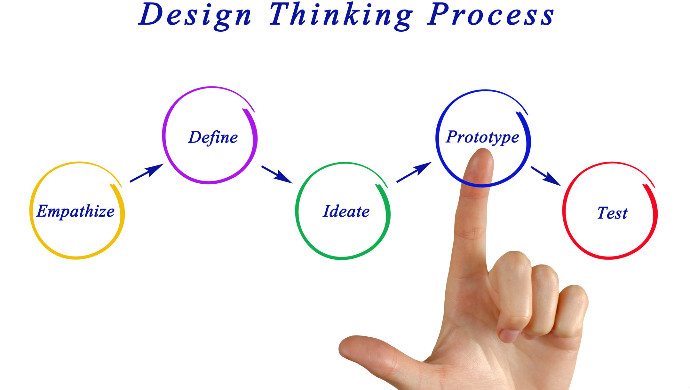Are you investing too much on marketing products that will never sell?

For many people, no matter the job, they naturally want to improve.
CEOs like to increase earnings, account managers like to close deals, marketers like to increase sales. It is a matter of real pleasure to get better at any job.
In whatever position, most people have a measurable amount of success. But for designers, they can only judge their work based on personal preferences — there’s no way to track improvements.
Let’s say Company A has a fully developed a product with several cool features. After years of operation they notice that sales are extremely high in some regions while flunking in other regions.
In order to generate sales in those weak performing regions, what do they do?
Before spending a lot of cash on marketing efforts, consider the possibility that this massive waste of investor’s money actually begins at the product design.
Design thinking is the next frontier
“Design thinking is an iterative approach to problem solving that intentionally seeks out people with different perspectives, knowledge, skills and experience and has them work together to create a practical solution for a real-world problem.”
It is a solution-based way of thinking that starts with a specific goal and is tossed through multiple stages of iteration, divergence and convergence to solve complex problems in a human-centred way.
Traditional problem solving versus design thinking
Traditional problem solving often pinpoints a problem, define the steps to take and tools to use, stick to the plan and hopes for the desired result. It is straightforward but not always effective.
Design thinking, on the other hand, starts with an observation informed by an understanding of the culture and the context of a problem (what people need), rather than the problem itself.
As Steve Jobs said:
“Most people make the mistake of thinking design is what it looks like. People think it’s this veneer — that the designers are handed this box and told, ‘Make it look good!’ That’s not what we think design is. It’s not just what it looks like and feels like. Design is how it works.”
For some organisations, design involves hours of brainstorming sessions followed by a plan to test the best solution — which usually results in them discovering some way the idea won’t work. If the solution didn’t surface after an analysis of the problem itself, most of the time it will never be found by debating over statistics and economic forecasts.
Consider thinking that the solution can be born from a deep level of observation of the people who weren’t buying your product, and the cultures they were a part of.
Design Thinking Process
Based on “An Introduction to Design Thinking: Process Guide” from Stanford’s d.school, the design thinking process is separated into five steps:

1. Empathise
Any social endeavour begins with the human element.
Imagine the goal is to increase sales in specific regions and also improve the on-boarding of new users. In this phase, employees talk to a range of actual users to better understand their beliefs and values. The challenge lies in synthesising this within the context of your product.
Directly observe what the target customers do, how they think, and what they want. Ask questions like ‘what motivates or discourages them?’ or ‘where do they experience frustration?’
Also Read: 4 essential productivity tips for businesses with remote-friendly policies
The goal of this phase is to gather observations that you can begin to empathise with your users and their perspectives.
2. Define
Establish a point of view!
In this phase startups need to process what they’ve learned from the audience. What does all the information collected have in common?
Define the challenges. What exactly is the company trying to convey? What and who are they addressing? What does it say about the users? What do they need and How can the product help?
3. Ideate
This is the idea-dumping phase.
Brainstorm a range of crazy, creative ideas that address the unmet user needs identified in the Define phase. The point is to come up with as many solutions as possible.
Ideation gives better answers to challenges, and gives designers a better idea of a prototype that can delight the target customers. Thinking creatively and having many voices and solutions helps conjure up the best product for the users.
4. Prototype
Try different solutions!
There will be many nagging questions like “Will it work?” or “How will they respond?” The best way to allay these fears is to come up with a simple prototype, a demo or a test model. In this phase, Founders can begin to weigh the impact versus feasibility of the ideas.
Also Read: 5 myths about working with remote teams
The goal is to put the best ones to the test. Stanford’s d.school suggests that the prototype might be anything from a wall of post-it notes or a storyboard to a physical/digital item or an interactive activity.
5. Test
Step five is when companies can solicit feedback from the userbase. Usually it is about their experience interacting with the prototype.
Put the prototype in front of real customers and verify if it achieves the goals. Observe how the customers will react to the product. Ask questions like, ‘Does this solution meet users’ needs?’ and ‘Has it improved how they feel, think, or do their tasks?’
Observing and listening to the audience is the key here. Instead of explaining the prototype, let users experience it on their own. Encourage them to ask questions and give their feedback about the experience.
Make them feel comfortable and focussed in order to get valid feedback. Always let them know that it is the product being tested, and not the users.
Conclusion
The advantage of going through the design thinking process in no matter the field — be it design, marketing, web development, account management etc. — it is a human-centred process that starts with user data.
The process creates design artifacts that address real needs and then tests those artifacts with real users. It encourages innovation by exploring multiple avenues for the same problem.
While design thinking is simply an approach to problem solving, it increases the probability of success and breakthrough in innovation.
—
Featured Image Credit: Gratisography
Internal Image Credit: marigranula / 123RF Stock Photo
The post Meet design thinking: An approach to problem solving that can increase the probability of breakthrough in innovation appeared first on e27.